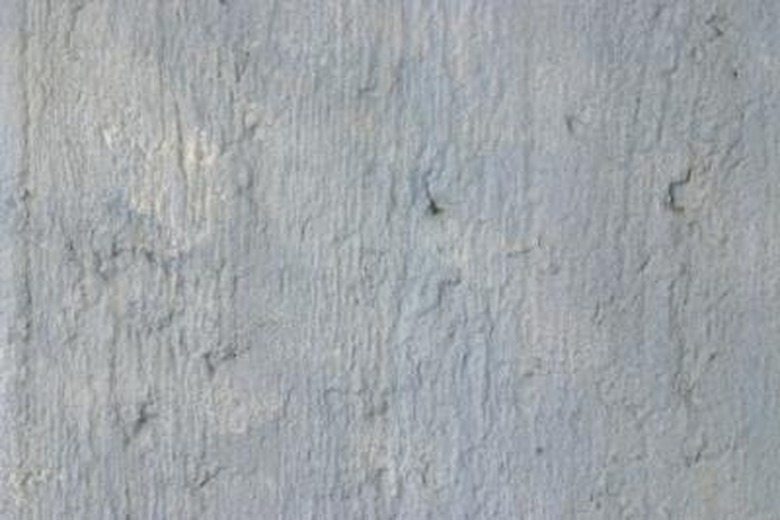How To Remove Efflorescence From Basement Walls
Things Needed
-
Plastic sheeting
-
2 buckets
-
Large sponge
-
Plastic-bristled scrub brush
-
White vinegar
Tip
Empty and change the buckets of water as they begin to get cloudy.
Some efflorescence is so severe or has been on the wall so long that it won't come off. If this is the case, muriatic acid may need to be used to remove efflorescence. Due to the toxicity of muriatic acid, it must be handled with extreme caution and should only be used as a last resort.
Home improvement stores often carry cleaning products specifically designed for removing efflorescence from concrete. If you can't get it off with water or vinegar, try using one of these products before using muriatic acid. Follow the label's instructions carefully.
If you notice a white, powdery film on your basement walls, efflorescence is likely the culprit. Efflorescence typically shows up better on darker concrete and occurs when the salts and other materials in the concrete make their way to the surface. This can diminish the appearance of your basement walls. Fortunately, you're not stuck with efflorescence on your walls forever. With the right products and methods, your basement walls will show no signs of the unsightly white powder.
Step 1
Cover the floor and furniture in the basement with plastic sheeting.
Step 2
Fill a bucket with warm water. Use a large sponge to thoroughly wet down the efflorescence spots on the walls. Work in sections about 3 square feet so the water doesn't dry before you have a chance to get rid of the efflorescence.
Step 3
Scrub the section of the basement wall briskly with a plastic-bristled scrub brush. Rinse that section of the wall with a clean sponge and water. Use plenty of water when rinsing the wall. Let the walls air-dry.
Step 4
Fill a bucket with undiluted white vinegar if the efflorescence remains. Fill a separate bucket with warm water. Use a plastic-bristled scrub brush to scrub 3-square-foot sections of the walls with the vinegar. Rinse each section with a sponge and plenty of clean water.
